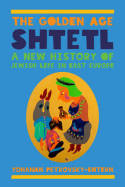The Golden Age Shtetl
a new history of jewish life in East Europe
- ISBN: 9780691160740
- Editorial: Princeton University Press
- Fecha de la edición: 2014
- Lugar de la edición: New Jersey. Estados Unidos de Norteamérica
- Encuadernación: Cartoné
- Medidas: 24 cm
- Nº Pág.: 448
- Idiomas: Inglés

The shtetl was home to two-thirds of East Europe's Jews in the eighteenth and nineteenth centuries, yet it has long been one of the most neglected and misunderstood chapters of the Jewish experience. This book provides the first grassroots social, economic, and cultural history of the shtetl. Challenging popular misconceptions of the shtetl as an isolated, ramshackle Jewish village stricken by poverty and pogroms, Yohanan Petrovsky-Shtern argues that, in its heyday from the 1790s to the 1840s, the shtetl was a thriving Jewish community as vibrant as any in Europe. Petrovsky-Shtern brings this golden age to life, looking at dozens of shtetls and drawing on a wealth of never-before-used archival material. The shtetl, in essence, was a Polish private town belonging to a Catholic magnate, administratively run by the tsarist empire, yet economically driven by Jews. Petrovsky-Shtern shows how its success hinged on its unique position in this triangle of power--as did its ultimate suppression. He reconstructs the rich social tapestry of these market towns, showing how Russian clerks put the shtetl on the empire's map, and chronicling how shtetl Jews traded widely, importing commodities from France, Austria, Prussia, and even the Ottoman Empire. Petrovsky-Shtern describes family life; dwellings, trading stalls, and taverns; books and religious life; and the bustling marketplace with its Polish gentry, Ukrainian peasants, and Russian policemen. Illustrated throughout with rare archival photographs and artwork, this nuanced history casts the shtetl in an altogether new light, revealing how its golden age continues to shape the collective memory of the Jewish people today.






